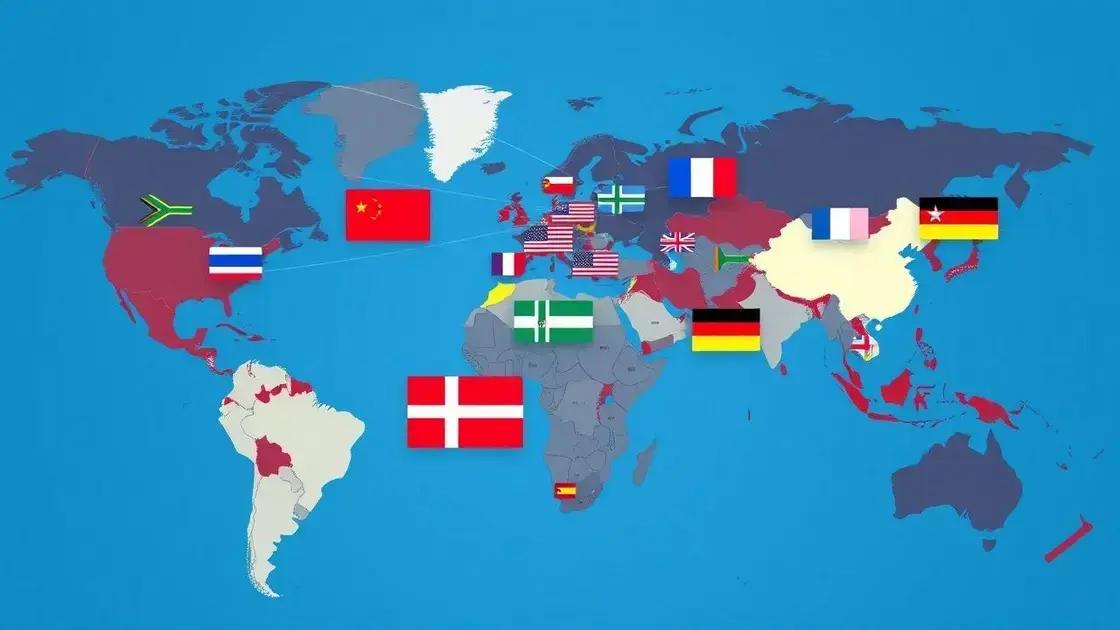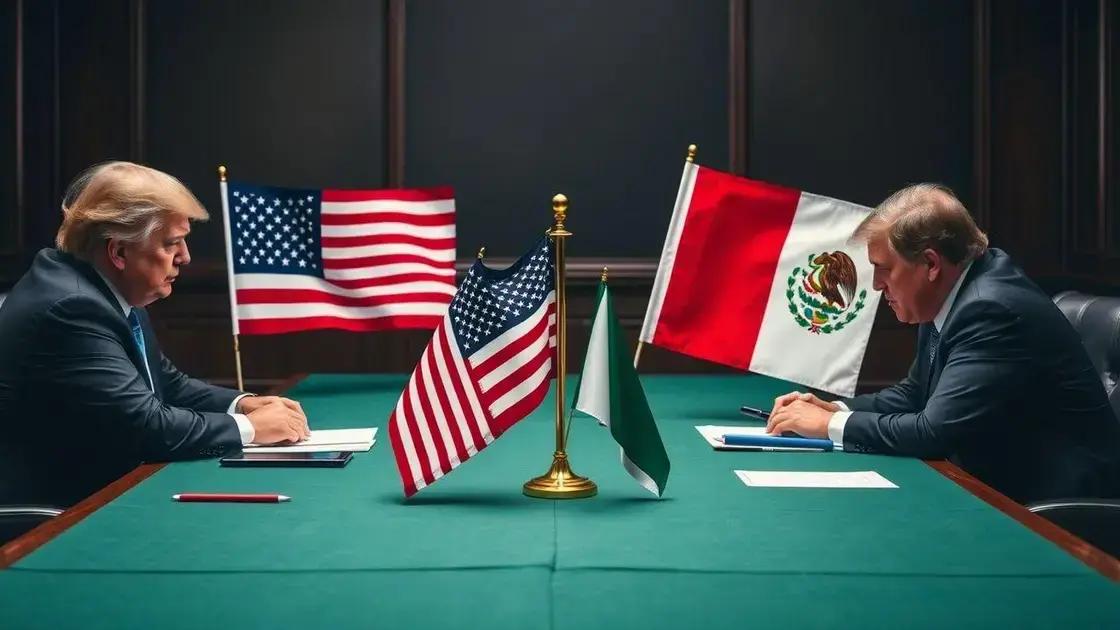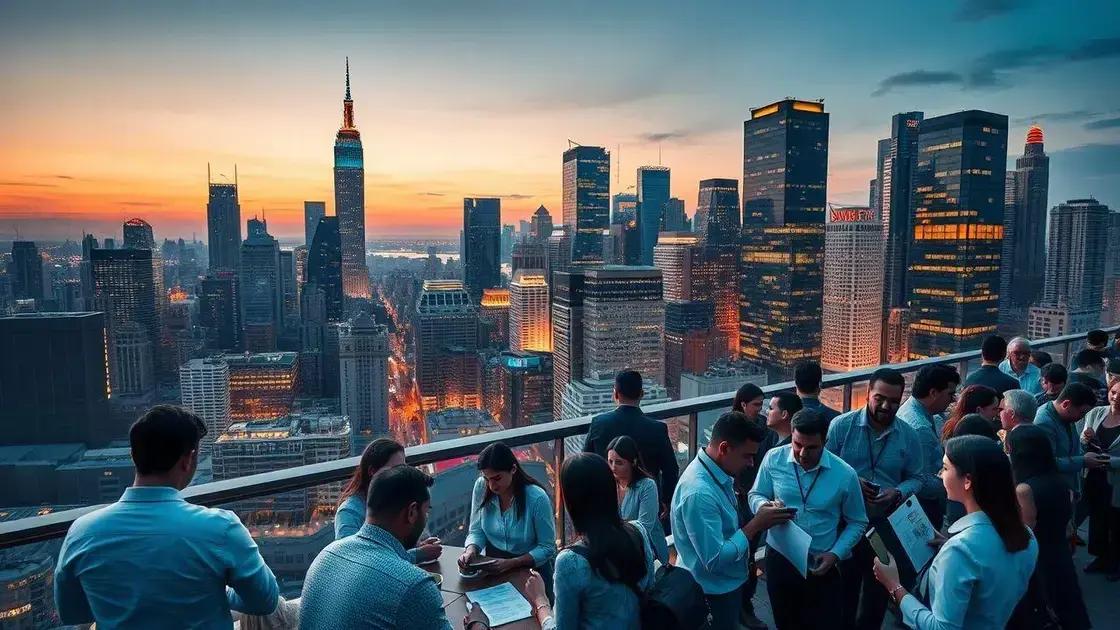International conflict: understanding its roots and impacts
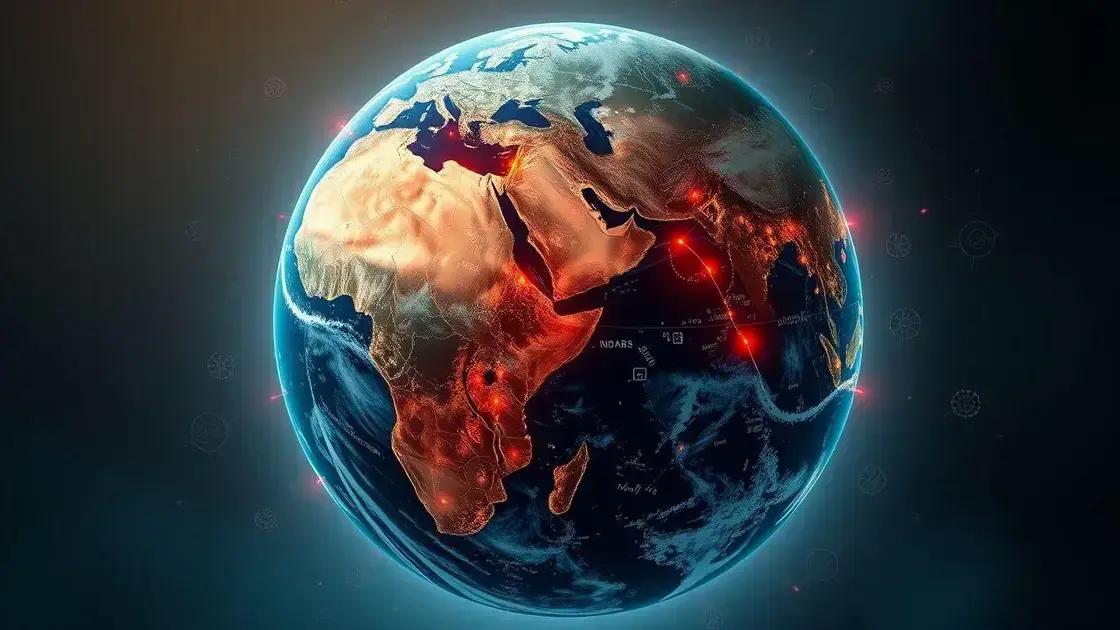
International conflict arises from tensions such as territorial disputes, cultural differences, and resource competition, significantly impacting global relationships and community stability.
International conflict affects nations worldwide and influences daily lives more than we realize. Have you ever wondered how these tensions shape our global landscape? Let’s delve into what drives these conflicts and their real-world effects.
Defining international conflict
To understand international conflict, we need to explore what it really means. Essentially, an international conflict arises when countries face opposing interests that yield tension. These conflicts can stem from various factors including territorial disputes, resource competition, and cultural differences.
Key Characteristics of International Conflicts
International conflicts often share certain characteristics. Recognizing these can help us better comprehend their nature. Some of the main traits include:
- Multiple stakeholders: Conflicts usually involve more than two parties, expanding the complexity.
- Diverse causes: Factors like economic interests, political ideologies, or historical grievances play significant roles.
- Varied impacts: The consequences can range from humanitarian crises to shifts in global power dynamics.
As we move deeper, it’s essential to consider that communication often escalates conflicts. Misunderstandings and mistrust can fuel even minor disagreements. Nations may act defensively, leading to military build-ups. This cycle can result in unwarranted tensions, pushing countries toward conflict.
Types of International Conflicts
International conflicts can be broadly classified into categories for clearer understanding. These include:
- Armed conflicts: Direct military engagements between nations or groups.
- Economic disputes: Conflicts triggered by trade barriers or sanctions.
- Diplomatic crises: Situations where diplomatic relations are strained or severed.
At their core, international conflicts reflect deep-seated issues among nations. Identifying the roots of these conflicts helps pave the way for potential solutions. By understanding the motivations and grievances at play, nations can engage in meaningful dialogue. Ultimately, open communication channels are essential to de-escalate tensions and foster peace.
Historical examples of conflicts
Understanding historical examples of conflicts provides valuable insights into how nations interact. Examining these events reveals patterns that can help prevent future disputes. History is filled with various conflicts, each with unique causes and consequences.
World War I
One of the most significant events of the 20th century was World War I. The war erupted due to a complex web of alliances and rising nationalism. Several key factors included:
- Assassination of Archduke Franz Ferdinand: This event triggered a series of alliances that brought multiple nations into the conflict.
- Militarism: Countries were building up their military forces, which heightened tensions.
- Imperialism: Competition over colonies contributed to rivalry among European powers.
World War I resulted in immense loss of life and significant political changes worldwide. It influenced treaties that shaped the modern world.
World War II
The aftermath of World War I laid the groundwork for World War II. Economic hardship and unresolved issues created fertile ground for conflict. Important aspects included:
- The Treaty of Versailles: It imposed harsh penalties on Germany, leading to resentment and instability.
- Rise of totalitarian regimes: Leaders like Hitler exploited economic woes to gain power.
- Expansionism: Aggressive territorial expansion by Axis powers escalated tensions worldwide.
World War II transformed the global landscape, leading to the emergence of the United States and the Soviet Union as superpowers.
Alongside these major wars, regional conflicts also shaped history. For instance, the Cold War showcased ideological battles without direct military combat. The tension between capitalism and communism influenced numerous proxy wars around the globe. Nations navigated a complex web of alliances and enmities during this period.
As we analyze these historical examples, it becomes clear that learning from the past is essential in understanding modern international conflicts. Awareness of historical grievances can help nations approach current issues with care. Moreover, recognizing patterns aids in fostering dialogue and building peace.
The role of diplomacy in conflict resolution
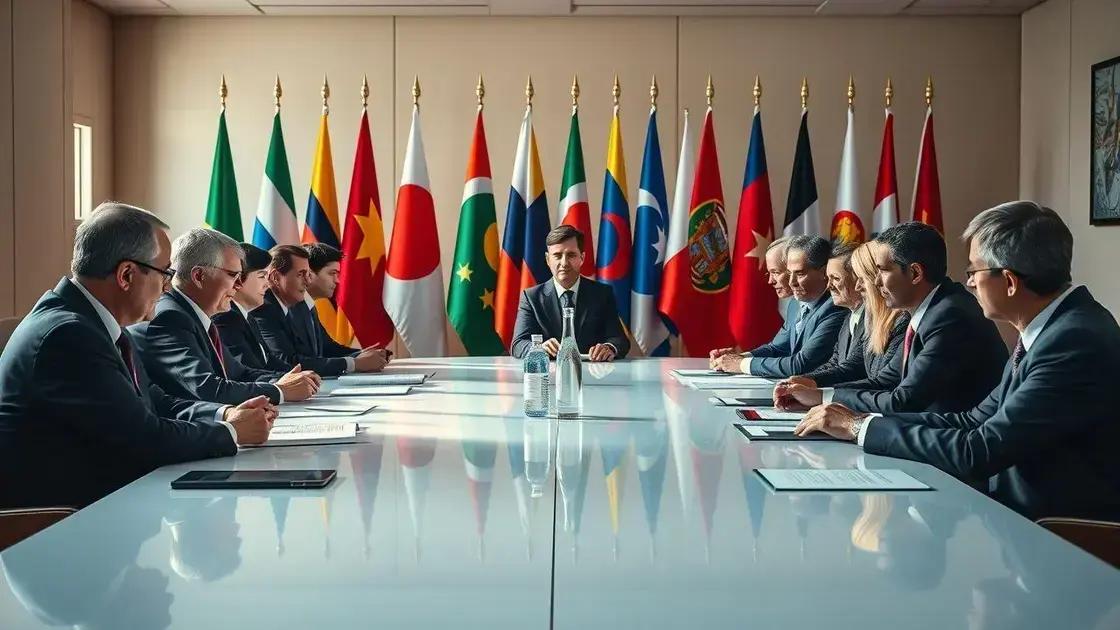
Diplomacy plays a crucial role in the complex landscape of conflict resolution. By facilitating communication between nations, it often serves as a first step toward peace. Through diplomatic efforts, countries can address grievances, negotiate terms, and ultimately work to avoid warfare.
Types of Diplomacy
There are various forms of diplomacy that can aid in resolving conflicts. Understanding these types helps us see how effective communication can lead to peace. Key types include:
- Bilateral diplomacy: This involves direct negotiations between two countries, allowing for intimate discussions on specific issues.
- Multilateral diplomacy: In this approach, multiple nations come together to discuss conflicts that affect many parties, often through international organizations.
- Track II diplomacy: This informal dialogue includes non-official actors like academics or community leaders, fostering understanding outside formal negotiations.
Each type has its own advantages and can be applied in different situations. In some cases, informal discussions can pave the way for official talks, laying a foundation for broader agreements.
Importance of Communication
Effective communication is vital in diplomacy. It establishes trust and understanding among nations. When nations can express their concerns and aspirations clearly, they are less likely to misinterpret each other’s actions. This clarity can prevent conflicts from escalating.
Furthermore, open dialogue encourages countries to seek peaceful solutions, as opposed to resorting to military action. For instance, successful negotiations can settle disputes over territory, trade, or resources. Recognizing each other’s perspectives can lead to compromises and collaborative efforts, fostering long-term relationships.
In situations where conflicts escalate, swift diplomatic interventions become essential. Examples include mediation efforts by neutral countries or international organizations. These interventions can de-escalate tensions and prompt parties to return to the negotiating table.
Overall, the role of diplomacy in conflict resolution is indispensable. By prioritizing dialogue over confrontation, nations can work towards a more peaceful world. It is through these diplomatic efforts that we can hope to address the root causes of conflicts and forge lasting solutions.
Impact of conflict on global communities
The impact of conflict on global communities is profound, affecting millions of lives. Conflicts can disrupt economies, displace populations, and create long-lasting divisions. Understanding these effects is essential in developing strategies for peace and recovery.
Economic Consequences
One significant outcome of conflict is its economic toll. Wars can devastate local economies and prevent growth. Key factors include:
- Destruction of infrastructure: Roads, schools, and hospitals are often damaged, hindering essential services.
- Loss of workforce: Conflict leads to deaths and displacement, reducing the number of people available for work.
- Disruption of trade: Conflicts can close borders, making it hard for communities to access goods.
These economic impacts can hinder a community’s ability to recover after the conflict ends.
Social Fabric and Community Dynamics
Beyond economics, conflict deeply affects the social fabric of communities. It can lead to a breakdown of trust and heightened tensions. In societies, we often see:
- Increased polarization: Conflicts can divide communities along ethnic, religious, or political lines.
- Psychosocial trauma: Individuals and families experience long-term mental health issues from violence and loss.
- Displacement: Many people are forced to flee their homes, often becoming refugees or internally displaced persons.
These social challenges can hinder reconciliation efforts and create barriers to rebuilding trust.
Additionally, conflicts exacerbate existing inequalities, making it harder for marginalized groups to access resources or participate in rebuilding efforts. For example, women and children often face heightened risks of violence during and after conflicts, complicating efforts to promote equality.
The global community must recognize these impacts. By understanding the effects of conflict, we can support initiatives that foster recovery and reconciliation. Working together, countries can help rebuild the lives shattered by war, focusing on healing and integration to prevent the cycles of violence from repeating.
Future trends in international conflict
The future trends in international conflict are evolving due to technological advancements, sociopolitical changes, and global dynamics. Understanding these trends can help nations prepare for challenges ahead and foster a more peaceful world.
The Role of Technology
Technology is set to play a crucial role in shaping future conflicts. Innovations in military technology and cyber capabilities are transforming the battlefield. Consider the following:
- Cyber warfare: As nations increasingly rely on digital networks, cyberattacks can disrupt essential services and national security.
- Autonomous weapons: Drones and AI-enhanced systems may change how battles are fought, with potential implications for ethics and accountability.
- Information warfare: The spread of misinformation can influence public opinion and destabilize societies without direct military engagement.
These developments necessitate a new framework for international law and conflict resolution to mitigate risks.
Geopolitical Shifts
Shifting power dynamics among nations will also impact the nature of conflicts. Traditional powers may face new challengers as emerging economies grow. Key aspects include:
- Regional power centers: Countries like China and India are increasing their influence, leading to potential competition and conflict.
- Resource scarcity: As populations grow and resources dwindle, competition for water, energy, and food will drive tensions.
- Climate change: Environmental changes can force migration and exacerbate existing conflicts, as communities face extreme weather and habitat loss.
Addressing these challenges will require international cooperation and innovative solutions.
Additionally, the role of non-state actors is likely to grow. Groups such as terrorist organizations or transnational corporations can influence conflicts and stability. Their motivations can diverge significantly from national interests, complicating diplomatic relations.
Finally, grassroots movements and social activism may reshape how conflicts are approached. Increased awareness and advocacy for human rights can prompt political change, offering alternative paths to resolution. The voices of everyday people are becoming more significant in global discussions, pushing for diplomatic solutions over militaristic approaches.
FAQ – Frequently Asked Questions about International Conflicts
What are the main causes of international conflicts?
International conflicts often arise from territorial disputes, resource competition, political ideologies, and cultural differences.
How does technology influence modern conflicts?
Technology plays a significant role through cyber warfare, autonomous weapons, and information warfare, changing how conflicts are initiated and fought.
What is the importance of diplomacy in resolving conflicts?
Diplomacy is essential as it facilitates communication between nations, helping to address grievances and negotiate peaceful solutions.
How do international conflicts affect communities?
Conflicts disrupt economies, displace populations, and lead to increased divisions within societies, often resulting in long-term challenges.

